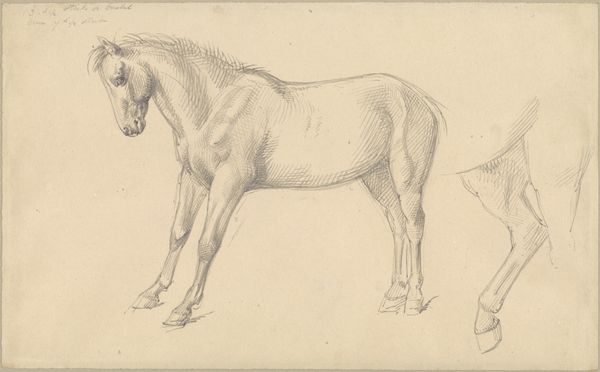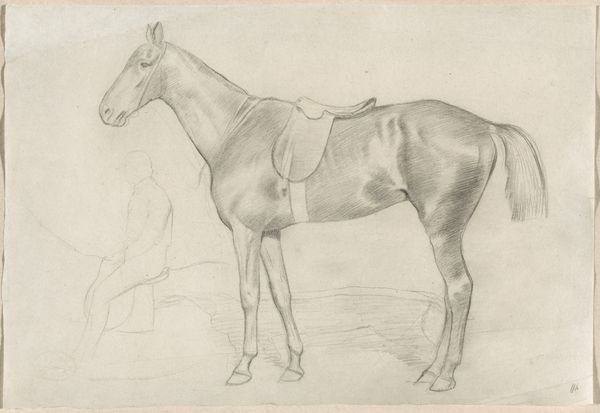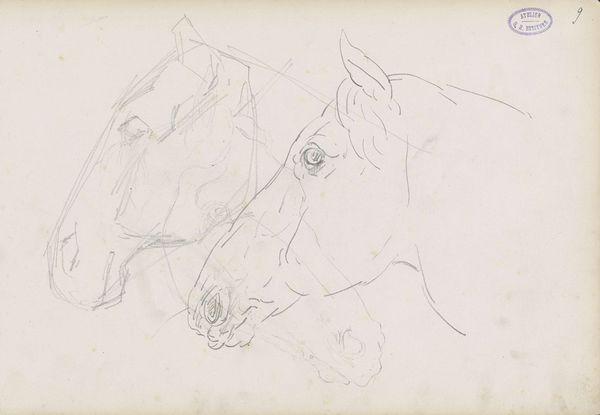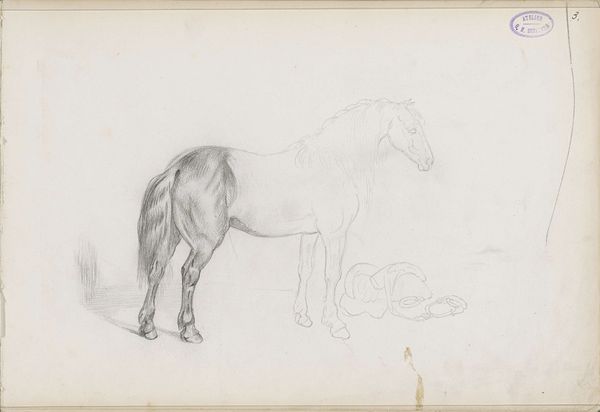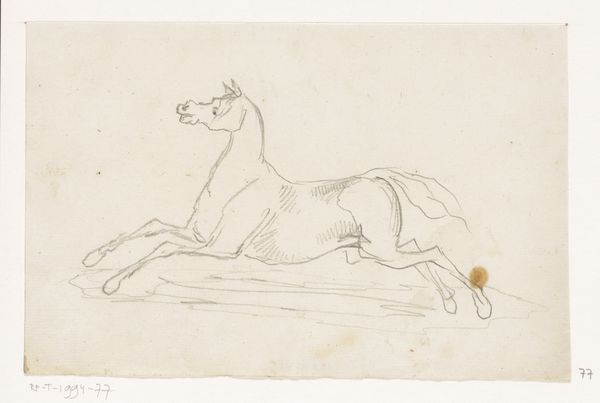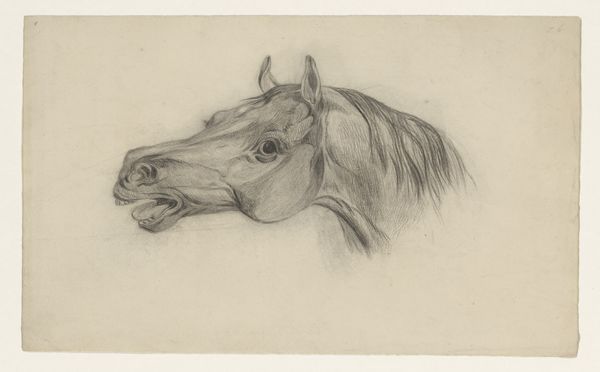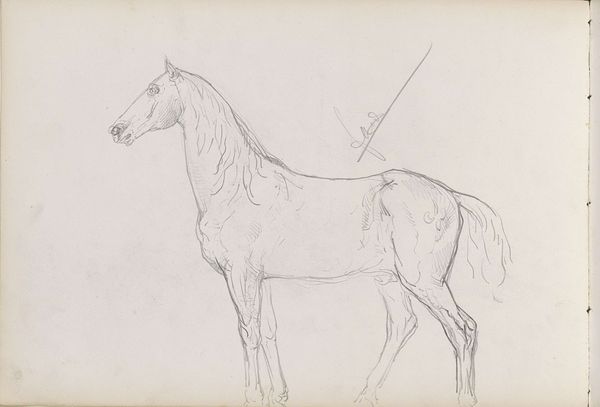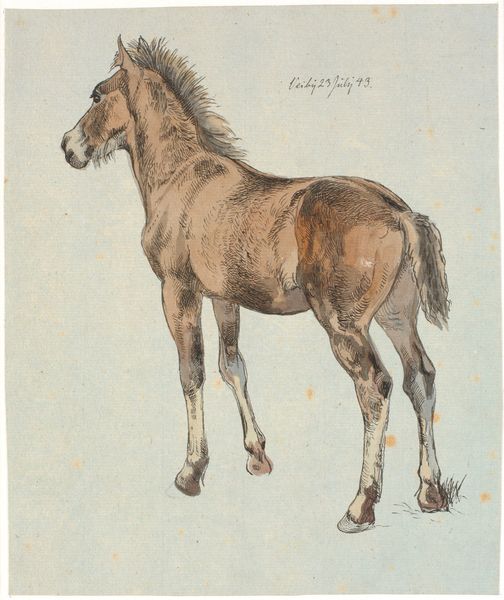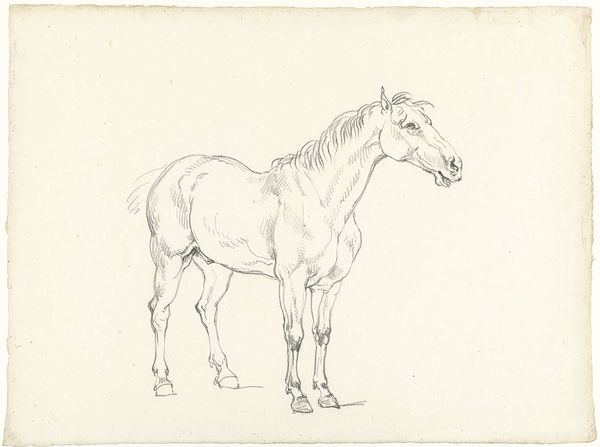
drawing, watercolor, pencil
#
drawing
#
animal
#
pencil sketch
#
figuration
#
watercolor
#
romanticism
#
pencil
#
watercolour illustration
#
realism
Dimensions: 400 mm (height) x 592 mm (width) (bladmaal)
Curator: Before us, we have "Three Running Horses," a pencil and watercolor drawing created in the 1820s by Christian David Gebauer, a Danish artist. It's part of the collection at the SMK, the Statens Museum for Kunst. Editor: Wow, it's got this unfinished, dreamlike quality to it. The fully rendered horse in the foreground practically leaps off the page, while the others are these ethereal echoes... it feels almost like a study of movement itself, rather than a portrait of horses. Curator: Precisely. Gebauer, influenced by Romanticism and perhaps even the emerging interest in realistic depictions, often sketched animals, especially horses. These weren't just idle doodles, they reflected societal trends toward equestrian culture among the upper classes and military interests of the time. These artworks promoted and advanced the perceived significance of horses in 19th century Europe. Editor: You know, it also makes me think of Muybridge and his motion studies, only decades earlier and infused with a touch of poetry. It’s not just capturing the horses, it is as if he is celebrating their power. The watercolor gives the main horse a warmth, almost a personality, whilst also highlighting that feeling of being in motion! Curator: The "unfinished" look speaks to artistic process too. Sketches like this held a different value. They weren't always meant for public consumption like a fully realized painting. Instead, these served as part of the artistic learning or professional practice of image making for print production. Editor: I dig it! It's a glimpse behind the curtain. Almost like you're invited to look into the artists studio and into his mind while in creative development. You see how the final image is taking shape through its composition, texture, color and balance - just amazing. Curator: Definitely! So often we see finished works in grand frames. A simple study such as this reminds us that image-making often started from observation, sometimes not resolved, often capturing specific movements with intent. It is quite fascinating to see its legacy continuing into the practices and aesthetic qualities that persist into our world today. Editor: Right. You’ve shown how even something seemingly simple, a drawing of some horses, opens up worlds. Thank you!
Comments
No comments
Be the first to comment and join the conversation on the ultimate creative platform.


